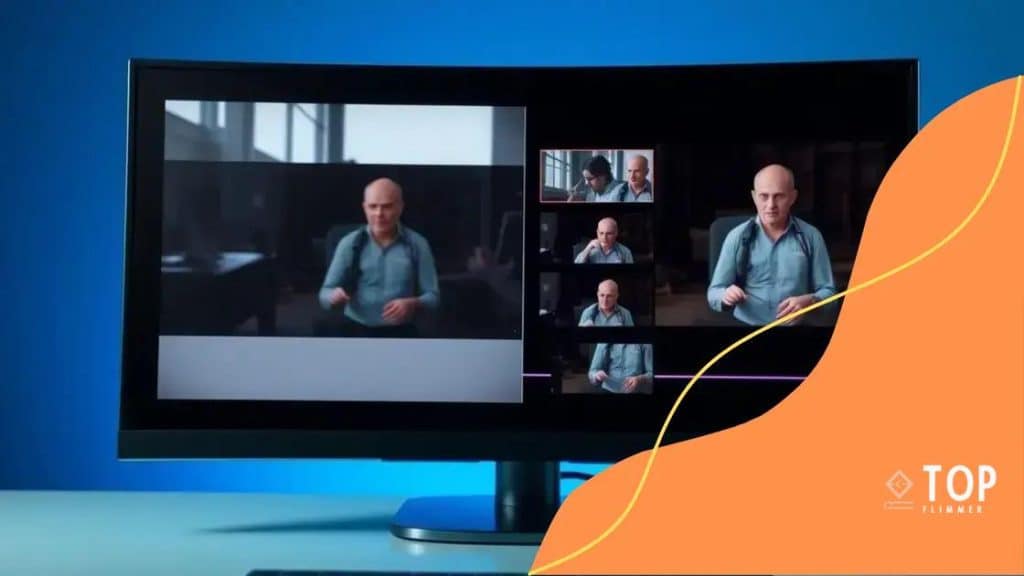The impact of deepfake technology on media trust

The impact of deepfake technology on media trust is significant, as it erodes credibility by making it difficult for audiences to distinguish real content from manipulated media.
The impact of deepfake technology on media trust is hard to ignore in today’s digital landscape. As these realistic manipulations become more common, they challenge our perceptions of truth and authenticity. Have you ever questioned what you see online?
Understanding deepfake technology
Understanding deepfake technology is crucial in a world where misinformation can spread rapidly. Deepfakes use artificial intelligence to create hyper-realistic fake videos or audio recordings, blurring the line between reality and fabrication. With just a few clicks, someone can manipulate content that looks genuine, leading us to question what we see and hear.
How Deepfakes Work
At the core of deepfake technology are algorithms that analyze and mimic the features of a person’s appearance and voice. The process involves two main components: generative adversarial networks (GANs) and machine learning. GANs consist of two neural networks that work against each other; one generates fake content while the other evaluates its authenticity.
Common Applications
- Entertainment: Used in movies for de-aging characters.
- Political manipulation: Fake videos can mislead voters.
- Social media: Users create funny or shocking content.
Deepfake technology is not just limited to entertainment; it can influence public opinion, spreading false narratives with ease. The ethical implications raise concerns about privacy violations and misuse. For instance, public figures’ images can be altered to create damaging fake narratives.
The Risks of Deepfake Technology
With the rise of deepfakes, we face significant risks that challenge our trust in media. Misinformation can amplify existing societal issues, leading to distrust in genuine media sources. How can we verify the authenticity of what we consume?
As the technology evolves, so does the ability to detect deepfakes. Researchers are developing tools that assess imaging consistency, sound patterns, and even pixel integrity to spot potential fakes. However, this is an ongoing battle, as each new detection tool prompts advancements in deepfake creation.
Understanding deepfake technology is essential for navigating today’s media landscape. As consumers, we must stay informed and skeptical, actively questioning the content we encounter. Ultimately, education and awareness are our best defenses against the misuse of this powerful technology.
The rise of misinformation
The rise of misinformation is a critical issue in today’s digital world. As deepfake technology advances, it becomes easier to create and spread false information quickly. This problem affects individuals, companies, and even governments, making it essential to understand how misinformation spreads and its potential impact.
How Misinformation Spreads
Misinformation often spreads through social media, where content can go viral in minutes. Users share videos, articles, and memes without verifying facts, contributing to a culture of instant sharing. This rapid spread can lead to mass panic, misguided beliefs, and even violence.
Factors Contributing to Misinformation
- Anonymity: Many users share content without accountability.
- Algorithms: Social media algorithms promote engaging—often misleading—content.
- Emotional appeal: Misinformation often triggers strong emotional reactions, making it more likely to be shared.
As the lines between fact and fiction blur, it becomes increasingly challenging for the public to discern reality. Deepfake technology adds another layer of complexity, creating believable yet false narratives that can mislead even the most discerning viewers. The creation of deepfake videos can lead to serious misunderstandings and can affect public perception, especially during elections or significant events.
The Impact on Society
The proliferation of misinformation can lead to societal issues, such as eroding trust in media and institutions. When people cannot trust what they see, they become skeptical of all information. This skepticism can divide communities, making it difficult for people to come together to address important issues.
Moreover, misinformation can undermine democratic processes, as individuals may base their voting decisions on false narratives. The consequences of spreading misinformation are far-reaching, affecting everything from public health to political stability.
In this landscape, it is essential for consumers of media to develop critical thinking skills. Understanding the tactics used to spread misinformation allows individuals to scrutinize information more effectively. Educating oneself about how misinformation operates is crucial to navigate the modern media environment effectively.
Effects on traditional media credibility

Effects on traditional media credibility are profound as deepfake technology becomes more widespread. Traditional media outlets, once considered the gold standard for reliable information, now face significant challenges in maintaining public trust. As deepfakes become indistinguishable from real footage, the credibility of legitimate news sources is jeopardized.
The Challenge of Authenticity
In an era dominated by social media, quick sharing of news can lead to the rapid spread of manipulated content. When audiences encounter a deepfake that appears on a reputable news site, their ability to trust authentic reporting diminishes. This erosion of trust can lead to skepticism about everything from political speeches to health guidelines.
The Impact of Misinformation
- Audiences may doubt the accuracy of real videos.
- Journalists face increasing pressure to verify content.
- Public trust in media organizations declines.
The consequences are serious. When people begin to question the legitimacy of trusted news outlets, the implications for democracy and informed decision-making are staggering. In this new landscape, sensational news often captures attention over verifiable facts.
Adapting to New Realities
To combat this decline in credibility, traditional media is employing several strategies. Many outlets are investing in verification technologies that help identify deepfakes before they go live. This includes partnerships with experts in artificial intelligence to enhance their capabilities in detecting manipulated content.
Moreover, media organizations are also increasing transparency regarding their sources and methods. By explaining how stories are constructed, they help rebuild trust with the public. This includes providing clear disclaimers when content has been modified or is speculative. As audiences grow more discerning, they value transparency and accountability from news organizations.
Furthermore, educating the public about deepfakes is crucial. By raising awareness about how these manipulations occur, media can empower audiences to think critically about the content they consume. They can learn to ask essential questions, check sources, and recognize potential red flags in what they view online, which can ultimately safeguard media credibility.
Legal implications and challenges
Legal implications and challenges surrounding deepfake technology are complex and multifaceted. As this technology evolves, it raises important questions about intellectual property, consent, and defamation. Understanding these implications is essential for both creators and consumers of digital content.
Intellectual Property Concerns
Deepfakes often use existing images, videos, or audio recordings, leading to potential violations of copyright. The unauthorized use of someone’s likeness can result in significant legal disputes. Creators may face lawsuits for infringing on the rights of the individuals they represent in deepfakes, raising concerns about ownership and consent.
Consent and Privacy Issues
- Misuse of likeness: Individuals may find their image misappropriated in deepfake content without their permission.
- Reputational damage: Deepfakes can lead to false narratives that severely impact personal and professional reputations.
- Emotional distress: Victims of identity theft through deepfakes may experience emotional turmoil and stress.
As a result, legal frameworks are struggling to keep up with the rapid advancements in deepfake technology. Existing laws around privacy and defamation are often inadequate for addressing new challenges posed by hyper-realistic content.
Regulatory Challenges
Governments and organizations are beginning to implement regulations to mitigate the risks associated with deepfakes. These regulations aim to create accountability for those who produce and share manipulative content. However, enforcement remains a challenge. The anonymity of the internet makes it difficult to track down offenders and hold them accountable for actions that could harm others.
In addition to regulatory hurdles, there is an ongoing debate about how to balance freedom of expression with the need for protection against misinformation. Striking this balance is crucial, as overly restrictive measures could infringe on legitimate creative expression while failing to adequately protect individuals from harm.
As the legal landscape surrounding deepfakes continues to evolve, it is vital for individuals, creators, and legislatures to stay informed and proactive. Understanding the potential legal ramifications of using deepfake technology is essential in navigating this complex and ever-changing field.
Strategies for combating deepfakes
Strategies for combating deepfakes are essential as the technology becomes more prevalent. As deepfakes pose significant risks to authenticity and trust, individuals and organizations are exploring various methods to address these challenges effectively.
Raising Public Awareness
One effective strategy is educating the public about deepfake technology. When people understand how deepfakes are created and the potential harm they can cause, they become more critical consumers of media. Workshops, seminars, and online resources can empower individuals to identify signs of manipulated content.
Developing Detection Tools
- AI Algorithms: Many researchers are working on artificial intelligence tools that can detect deepfakes. These tools analyze patterns in videos and audio to identify inconsistencies.
- Watermarking: Implementing digital watermarks in authentic media can help distinguish original content from altered versions.
- Verification Services: Media outlets and platforms can establish verification services to fact-check videos and images.
As detection technologies advance, they will serve as a critical defense against the distribution of deepfakes. By utilizing these tools, platforms can help protect their users from misinformation.
Legal and Regulatory Measures
In addition to technological solutions, it is vital to implement regulatory measures. Governments and organizations can develop laws that address the creation and distribution of deepfake content. Such regulations can help hold creators accountable for malicious use and protect individuals’ rights.
Moreover, establishing penalties for the misuse of deepfakes can deter individuals from creating harmful content. It is essential to balance regulation with freedom of expression to avoid stifling creativity and innovation.
Encouraging Media Literacy
Promoting media literacy among audiences is another important strategy. Teaching individuals how to critically evaluate sources, identify credible information, and verify facts empowers them to make informed decisions about the content they consume. This education can take place in schools, workplaces, and community programs, focusing on the importance of cross-checking information.
By combining technology, legal measures, and education, society can better navigate the challenges posed by deepfakes. These strategies can foster a more informed public and enhance the integrity of information in the digital age.
FAQ – Frequently Asked Questions about Deepfake Technology and Its Impacts
What are deepfakes?
Deepfakes are videos or audio recordings that have been digitally manipulated to make it look like someone said or did something they did not.
How do deepfakes affect media credibility?
Deepfakes can undermine trust in legitimate media by making it harder for audiences to discern between real and fake content.
What strategies can be used to combat deepfakes?
Raising public awareness, developing detection tools, and implementing legal measures are key strategies to combat deepfakes.
Why is media literacy important in the context of deepfakes?
Media literacy helps people critically evaluate information sources, enabling them to better identify false narratives and protect against misinformation.






